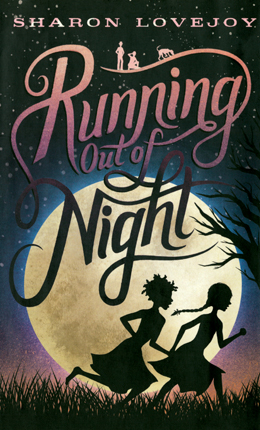Full Text Reviews: School Library Journal - 08/01/2014 Gr 4–7—When Zenobia, a fugitive slave, creeps onto the porch of an 1858 Virginia home, the white girl inside schemes to prevent her abusive father from spotting the escapee. Denied a name and mistreated by her motherless family, the girl quickly concludes that her circumstances look little better than plucky Zenobia's and the two resolve to flee together. Neither one has a route planned; still, equipped with determination, good-luck charms, and a prodigious amount of plot-finagling by Lovejoy, they continually elude the passel of slave catchers and incensed family members chasing them. Narrator Lark (her new friend gifts her the name) and Zenobia, joined by an older teen slave, aim for the Quaker town of Waterford, where Lark believes folks will aid in their escape. Throughout the somewhat haltingly paced tribulations they encounter—the town proves vulnerable to the one-dimensional villains trailing the group and illness or injury strikes all three—Lark displays a charming resolve to survive as a trio, an attitude most audiences will find winning, if unlikely and possibly ill-advised. The rural, mid-19th-century dialect, coupled with the author's interest in ethnobotany, roots the story deeply in the houses, forests, gardens, and even streambeds of antebellum Virginia; Lark's knowledge of plants allows for a satisfying, flora-induced revenge on one slave runner. Unfortunately, a contrived showdown tidies away the rest of the menacing trackers and the abrupt ending feels a mite cheery for the reality of a poor, newly orphaned girl and two fugitive slaves who haven't even made it out of Virginia. Some readers will suspend their disbelief, however, to enjoy the triumph of these intrepid souls.—Robbin E. Friedman, Chappaqua Library, NY - Copyright 2014 Publishers Weekly, Library Journal and/or School Library Journal used with permission. Booklist - 11/01/2014 When Zenobia, a young runaway, turns up on the porch of her father’s northern Virginia cabin, a neglected and abused 12-year-old white girl takes the slave in and hides her until they can both flee. Zenobia becomes the first friend Lark ever had. Joined by a third young runaway, Brightwell, they make their way down Catoctin Creek toward Waterford, where they hope to find help in the Quaker community. They’re captured but escape from slave hunters only to narrowly escape Lark’s father. Even inside Auntie Theodate’s house in Waterford they’re not safe. Lark tells this suspenseful story in her own distinctive, believable voice, her strong dialect indicated through dropped endings and consistent errors in grammar—no apostrophes get in the reader’s way. Tiny chapter-opening sayings add atmosphere. What stands out most is the author’s depiction of the rural Virginia setting. Lark’s knowledge of the natural world leads to a satisfying, nonviolent resolution. An Underground Railroad story with a distinctive flavor. - Copyright 2014 Booklist. Bulletin for the Center... - 01/01/2015 Battered and abused by her father and brothers, a twelve-year-old girl, nameless since birth, finally decides to run away after discovering a fugitive slave hiding on her family’s farm in 1858 Virginia. Zenobia, the slave, names the girl Lark, and the two set off in the night, pursued by vicious slave traders and Lark’s sadistic father and brothers. The forest is far from friendly, with poisonous snakes and flooding rivers, and a narrow escape from their trackers temporarily separates the girls, but they eventually find each other and safety in a nearby Quaker town, a known stop on the Underground Railroad. Unfortunately, the stop is also known to the slave traders, who show up in the dead of night and kidnap Zenobia, another slave, and the Quaker woman who helped them; Lark must therefore turn South-and back toward the home she thought she left behind-to save them. An author’s note points toward Lovejoy’s careful research, and she paints a raw picture of the casual violence that slavery entailed-the scene in which the traders read out a list of runaway slaves described primarily by their scars and injuries is particularly telling. While the book parallels Zenobia’s and Lark’s abusive situations, it’s also aware that Lark’s color and privilege give her possibilities that remain closed to Zenobia. Lark’s folksy, rural dialect might initially challenge some readers, but the voice lends an authenticity to the tale and makes for an immersive experience, especially with Lark’s vivid descriptions of the Virginian wilderness. Cliffhanger endings for nearly every chapter prove that adventure tropes can work just as well in historical fiction to keep the pages turning, and a happy but bittersweet conclusion ensures that both girls finally find safety. KQG - Copyright 2015 The Board of Trustees of the University of Illinois. Loading...
|



